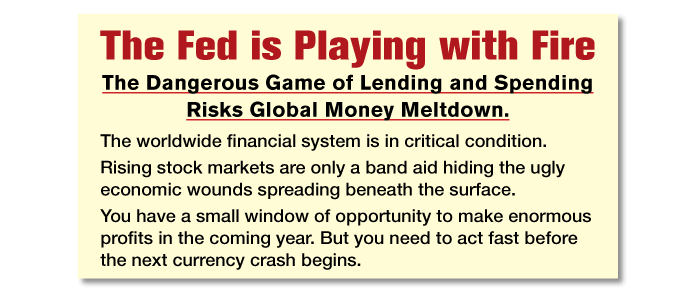ETFs play followtheleader to mutual funds The Globe and Mail
Post on: 2 Апрель, 2015 No Comment

ETFs are the investment choice for the independent non-conformist, so why are they playing follow the leader with mutual funds?
More Related to this Story
Good luck with that, ETFs. Your strategy ignores the single biggest reason why ETF assets add up to just 4.6 per cent of the money invested in mutual funds, even after five years of strong growth. Funds are available pretty much everywhere investments are sold, while ETFs can only be purchased if you have a brokerage account (discount or full service).
That’s why for many investors, it’s game over with ETFs. This was true before 15 mostly superfluous new ETFs were introduced, and it’s true today.
We now have 151 ETFs listed on the Toronto Stock Exchange. Speaking on behalf of investors, let me just say to the Canadian ETF industry: We’re good now, thanks. There’s plenty to keep us busy.
There have long been plenty of core and sector ETFs for stocks and bonds. The new products released last week cut things as fine as letting you invest directly in Brazil, India, China and Latin America instead of taking a the more broad and diversified approach of owning an emerging markets ETF.
Investor Education:
- All about ETFs
- How to make ETFs part of your RRSP
- The bad boys of the ETF world
- Are ETFs your cup of tea?
- How do ETFs fit my investment strategy at this stage in life?
- Related content How do Exchange-Traded Funds (ETFs) work?
There are also new ETFs for investing in junior gold stocks, long-term corporate bonds and utility stocks. ETFs — they slice, they dice and now they julienne the market, too.
Mutual funds have taken a similar but slightly different approach. They don’t offer quite the range of sector and sub-sectors, but they offer a vastly deeper selection in the categories they do cover. Shocking factoid: Globefund.com now shows 11,942 entries in its database.
True, ETFs themselves account for some of that, and hedge funds and principal-protected notes are in the mix as well. But even so, the fund industry is ubiquitous.
Tonnes of funds that you can buy most anywhere. Your bank branch? Check. The investment adviser in the strip mall near your house? Check. Your life insurance guy? Check. Financial planning firms, full service brokers and online brokers? Check, check and check.
Cat:e528746c-3414-401a-b14b-50247e3bdf01Forum:d0fa4e14-88d2-41f9-8a19-896bdff9544b
The exchange-traded nature of ETFs is both a strength and a weakness. A company that offers index-tracking ETFs has far less overhead than a mutual fund company and can thus charge investors much less to own its products. But having your product bought and sold like a stock also means you can’t reach lots of investors.
First, there are clients of the majority of advisers who are licensed to sell only mutual funds, and who make a living through fees and commissions associated with funds. Then, there are the advisers who could sell ETFs, but choose not to for various reasons.
There’s another group cut off from ETFs — haphazard investors, or people who own a bunch of funds from their bank or credit union. ETFs are a sensible alternative to funds for these people, but there’s a hitch. To buy ETFs, these investors would need to open a brokerage account and learn enough about investing to manage their own portfolios.
Suggestion to the ETF industry: take a breather on the new product launches and find ways to reach out to advisers and investors.
Start by doing a better job of talking to retail investors. Focus less on the gloss of all those new products and more on nuts-and-bolts stuff like how just a few ETFs can be snapped together into a the kind of portfolio that will last you decades with only a few tweaks once or twice a year (I’ll show you how in an upcoming Portfolio Strategy column in the Saturday ROB).
Persuading advisers is a challenge because it’s easier to make a living by using mutual funds for clients than ETFs. But let’s remember that huge pension funds are using the same indexing approach as ETFs to account for part of their portfolios. Surely small investors could benefit from the same approach.
Carpet-bombing the marketplace with product worked for the mutual fund industry because it never had much competition until ETFs started to become a force in recent years. ETF companies are trying the same thing, but they have to contend with a fund industry that holds $686-billion in assets to their $30-billion at the end of last year.
The ETF sector will never be a truly big player by introducing new products. It needs to get smarter about marketing the good products it already offers.
Follow me on Facebook. I’m at Rob Carrick — Personal Finance.
******
ETF point-counterpoint
Perspectives on ETF growth in Canada
Point One: ETF assets grew by almost 30 per cent annually in the past five years, compared with 5.6 per cent for mutual funds.
Counterpoint: Funds have assets of $686-billion in Canada, ETFs just over $30-billion.
Point Two: Seven ETFs listed on the TSX have a market capitalization (the total value of their shares) in excess of $1-billion.
Counterpoint: Between 35 and 40 per cent of ETF assets in Canada are held by institutional investors, with individuals holding the rest.
Point Three: ETFs represent 16 per cent of stock trading volume in Canada.
Counterpoint: Much of the volume is generated by leveraged ETFs (offering two times the up or down movement in an underlying index or commodity), which are not mainstream investing products.














